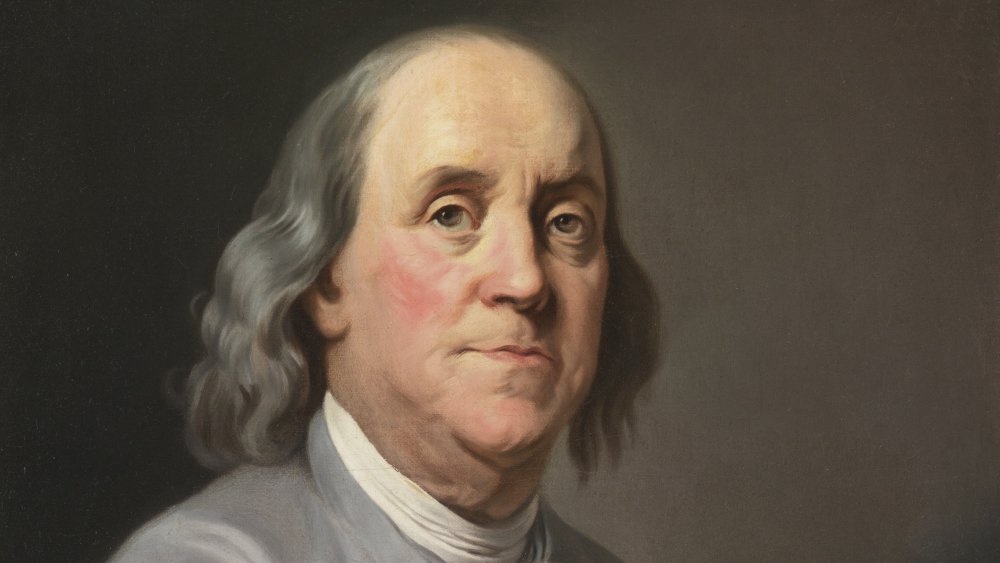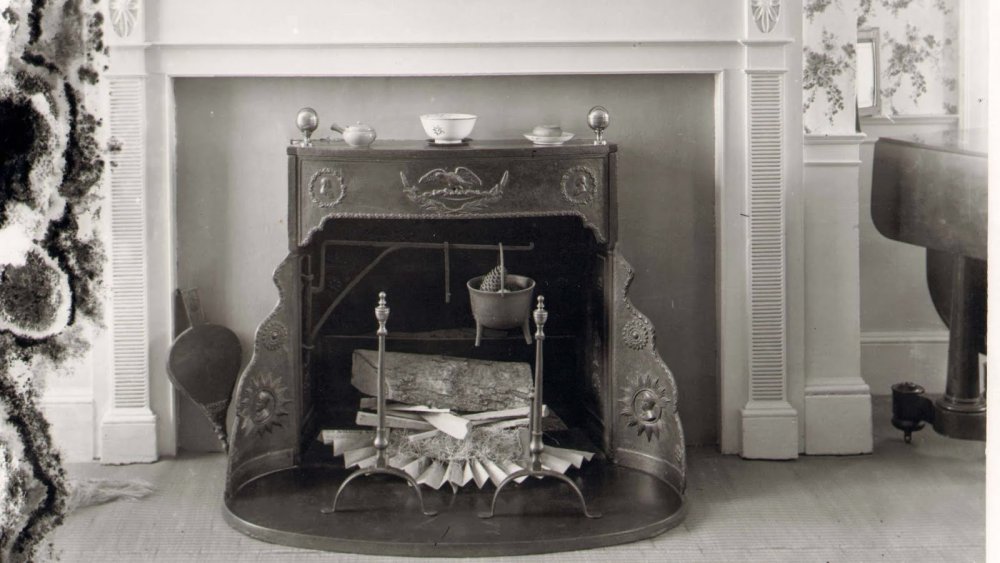Did Ben Franklin Really Invent A Stove?
Of all of the Founding Fathers of the United States of America, Benjamin Franklin was perhaps the most well-rounded and multitalented. In addition to helping draft the Declaration of Independence, serving as a diplomat between the United States and France, and performing science experiments that ultimately led to a better understanding of electricity and how it works, Franklin was a prolific inventor. Per the Franklin Institute, his wide-ranging and impressively diverse inventions include swim fins, bifocals, urinary catheters, and the "Franklin stove."
Also known as the "Pennsylvanian Fireplace," Franklin wrote in his autobiography that he invented the stove in 1742, but according to Founders Online, it was more likely during the winter of 1739-1740. The stove was a metal-lined fireplace that stood away from a building's chimney, designed with both a hollow baffle to allow heat from the stove to mix more quickly with the air rather than go up the chimney, and an inverted siphon that brought out more heat from the flames. Not only was his invention more efficient than traditional fireplaces, it was also less smoky, making it all the more desirable during cold Pennsylvania winters.
Franklin had his friend Robert Grace cast the iron plates used in the stove; the stoves sold for five pounds (yes, the United States was still using pounds at that point) and were extremely popular. A 1744 pamphlet written and printed by Franklin and funded by Grace, titled An Account Of the New Invented Pennsylvanian Fire-Places, served as a successful advertisement.
Franklin's inventions were all open source
Benjamin Franklin later recounted that the reaction to his pamphlet and the stove was so positive that the then-governor of Pennsylvania, Sir George Thomas, offered him a patent "for the sole Vending of them for a Term of Years," as quoted by Founders Online. Franklin didn't patent his stove design; in fact, he never patented any of his inventions, instead believing "we should be glad of an Opportunity to serve others by any Invention of ours, and this we should do freely and generously." This allowed anyone to manufacture and sell the stoves using the design described and illustrated within Franklin's pamphlet.
Franklin sent his pamphlet to many friends all over the world; Professor Johann F. Gronovius wrote from the Netherlands to tell Franklin "that invention hath found a great applause in this part of the world" and that he would see to the translation of the manufacturing directions into Dutch and French. In 1757, Franklin had a Franklin stove installed in his home in London and soon "many Hundreds" could be found in other London buildings.
Franklin remained interested in efficient methods of heating buildings for the rest of his life, devising coal heating plants that consumed their own smoke, corresponding with others about heating problems and techniques, and writing treatises on the topic into the 1780s. There are no known surviving examples of original Franklin stoves.

